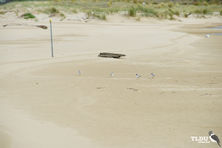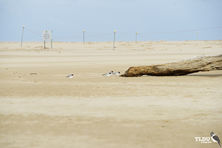
Shoppers Feedback:
Jan 17, 2017
Hello Ros,
I have now paid the invoice, but I would like to write to you just to say a big THANK YOU for getting me the Penguin!
The ChatterMate Penguin became a nice memory for me when I was in New Zealand, and I am so greatful to you for arranging so that I could have it! :-)
Thank you so much!!!!!!!!!!!
Regards,
Malin
Hi Ros,
Many thanks for your very kind email. I really appreciate your prompt reply!
I appreciate your advice regarding the decorations and customs. These are a gift for my daughter’s exchange student family so when she returns home on the weekend I will show her and see if she loves them as much as I do!
Thanks so very much again - I am truly grateful for your kind assistance.
Kind Regards
Bernadette
Ros,
Thanks again for the great customer service. It's a refreshing change!
Best regards,
Trevor
Hey Roz,
Thank you for your emails. Just loved my first order. The cute little Aussie bush critters are going to be used for an office Christmas decoration. My colleagues also liked them and talked about making an order to your site. I'll send you a photo when completed.
I'll be ordering more to send to my daughter's host family in America.
Fabulous service from you.
Kind regards,
Michelle
Thankyou. Order arrived today. One very happy grandson with his new beastly binoculars.
Regards,
Irene
- Home
- Wild Wonders
- Shop
- Aromas of Australia
- Australian Made
- Books
- Book Marks
- Christmas Decoration Sale
- Christmas Decorations
- Clocks
- Drink Holders
- Garden & Outdoor
- Gift Wrapping & Cards
- Home & Giftware
- Jewellery
- Keyrings
- New Products
- Pencils & Pen Holders
- Photo Frames
- Plush Toys
- Plush with Sound
- Sheepskin Rugs
- Stationery
- Stone Carvings
- Toys & Games
- Travel Goods
- Wedding
- Wild Figurines
- Wildlife Safety Products
- Wind Chimes
- Wine Charms
- View All Products
- Wildlife
- Australiana
- Explore
- Contact Us
Hooded Plover

Quick Facts
| Length: | 21 cm |
| Height: | - |
| Weight: | 95 grams |
| Colour: | - |
| Habitat: | Beaches with large amounts of beach-washed seaweed. Also found on inland salt lakes |
| Food: | Insects, sandhoppers, small bivalves and soldier crabs |
| Predators: | - |
| Status: | Endangered Species |
The Hooded Plover is a medium-sized sandy-brown plover. It has a black head and a white nape, and the black hindneck collar extends around and forks onto the breast. The underparts are white. The iris is dark brown, with a red eye ring. The legs are pink. Males and females are similar. Juveniles look like adults, but without the black head, hindneck and front of mantle, which are sandy-brown instead. Juvenile legs are pale orange. This species is also known as the Hooded Dotterel or Hoody. The genus name used to be Charadrius.
Similar species:
The Hooded Plover is similar to the Sanderling. The juvenile Hooded Plover is distinguished from the Sanderling by having brown, more uniformly marked plumage and behaving in a plover-like fashion i.e. it bobs its head up and down when looking for food, and runs quickly and stops suddenly.
Where does it live?
Distribution:
The Hooded Plover occurs on sandy beaches between Jervis Bay, New South Wales and the Eyre Peninsula, South Australia, as well as in Tasmania and between Esperance and Perth in south-west Western Australia.They are not abundant.
Habitat:
In Victoria, the highest densities of Hooded Plovers occur on beaches with large amounts of beach-washed seaweed. Densities are lowest on narrow, steep beaches, where there are few or no dunes, and where human activities are most intensive. In the south-west, they also occur on inland salt lakes.
Seasonal movements:
The Hooded Plover is non-migratory. Little detailed information exists regarding its movements within Australia. Local movements to salt lakes immediately behind beaches occur in winter in the east. In the west, they move from the coast to salt lakes some distance inland in winter.
What does it do?
Feeding:
The Hooded Plover's diet includes insects, sandhoppers (Orchestiasp.), small bivalves, and soldier crabs (Mictyris platycheles). It forages at all levels of the beach during all tide phases. It is most usually seen in pairs or small groups, darting about at the water's edge as waves recede, bobbing and pecking along the shore.
Breeding:
The Hooded Plover excavates a shallow scrape in sand or fine gravel situated above the high-tide mark on ocean beaches or among dunes. This nest may be encircled or lined with pebbles, seaweed and other beach debris. Usually one or two eggs hatch after about 30 days of incubation and the downy young leave the nest within a day or two. Its incubation period is longer than that of other Australasian-breeding plovers.
Living with us
The Hooded Plover's survival depends on undisturbed beaches, which are needed for succesful breeding. Off-road vehicles are a particular problem. The Hooded Plover is listed as an Endangered Species on Schedule 1 of the New South Wales Threatened Species Conservation Act, 1995 (TSC Act). It is also listed as a Vulnerable Species on Schedule 1 of the Commonwealth Endangered Species Protection Act, 1992.
Last Updated: Friday 19th July, 2013
BirdLife Australia - www.birdlife.org.au
BUSH e-TELEGRAPH
Signup for our monthly newsletter the "e-Telegraph"
Quick Links
Home | The Beginning | About The Land Down Under | Wild Wonders | Advertise on Wild Wonders | Christmas Decoration Sale | Christmas Tree Decorations | Drink Holders | Plush with Sound | Stone Carvings | Wildlife Wine Charms | Freebies | Australian Wildlife | Help Our Wildlife | Australiana | Photo of the Month | Explore The Land Down Under | Contact Us | Legal Notices


